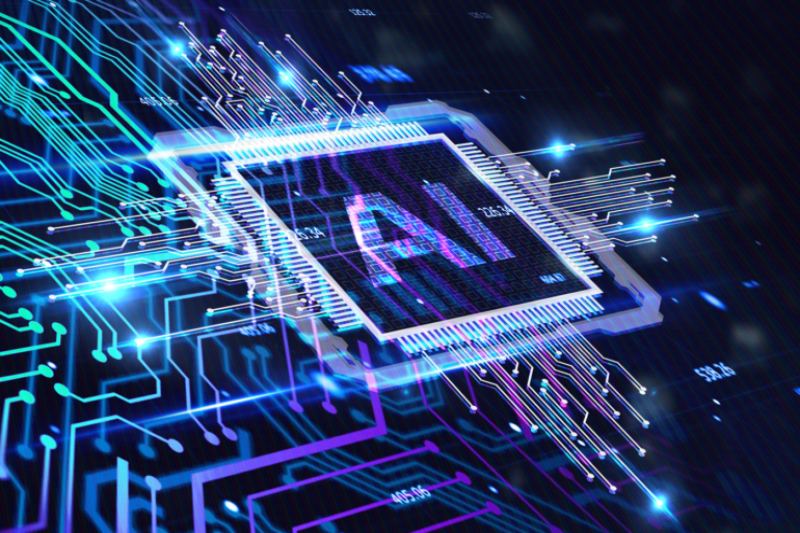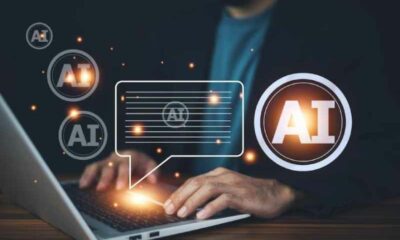It should come as no surprise that top tech executives polled by IEEE selected artificial intelligence (AI) as the most significant technology of 2024, given all the controversies surrounding the field.
A total of 350 CIOs, CTOs, IT directors, and other technology leaders from Brazil, China, India, the United Kingdom, and the United States were consulted for “The Impact of Technology in 2024 and Beyond: An IEEE Global Study.”
When asked to rank the technologies, artificial intelligence (AI) topped the list. Cloud computing was ranked third, and extended reality came in second.
The executives determined that the industries most likely to be impacted by technology in the upcoming year are manufacturing, telecommunications, and banking and financial services.
The leaders also discussed the potential areas of greatest benefit from 5G and speculated about the direction quantum computing is likely to take.
AI to increase efficiency and enhance cybersecurity
According to 54% of the tech leaders, detecting cybersecurity flaws and averting cyberattacks will be the main uses of AI. Similar to the tech leaders surveyed by IEEE in 2023, the executives expressed concern about insider threats, phishing scams, and ransomware attacks. In 2024, 37% of respondents expressed concern about ransomware, up from 30% the year before. Concerns about insider threats jumped from 19% to 26%, and phishing concerns went from 25% to 35%.
Over 40% of the tech executives stated that they believe artificial intelligence will improve the efficiency of supply chain and warehouse automation. According to the tech leaders, businesses will also use AI to shorten the time it takes to hire new staff members and screen resumes.
Additionally, 38 percent of respondents said AI will hasten software development.
“AI in software development can provide a significant productivity boost,” IEEE Senior Member Nicholas Napp told IEEE Transmitter. “It can also result in better products. For example, AI can be used to complete tasks that most engineers dread, such as providing detailed documentation and creating unit tests for their code.”
The advantages of 5G, digital twins, and extended reality
Over 60% of the executives expressed their expectation that digital twin and extended reality technologies will contribute to the advancement of more effective manufacturing processes and product prototype design, development, and testing. Virtual reality, augmented reality, and mixed reality are examples of extended reality. Digital twins are virtual representations of real-world systems or objects that are used to evaluate the performance of their real-world equivalents.
AI came out on top of the technologies they were asked to rank. Broadened the truth was second, and distributed computing came in third.
The chiefs recognized media communications, assembling, and banking and monetary administrations as the areas that are probably going to be impacted by innovation one year from now.
The pioneers additionally said something regarding what regions are adept to benefit most from 5G, and they considered on the eventual fate of quantum processing.
The top applications for AI, according to 54% of tech leaders, will be identifying cybersecurity vulnerabilities and preventing cyberattacks. AI will improve cybersecurity and introduce efficiency. Ransomware attacks, phishing, and insider threats are among the concerns expressed by executives, as was the case in the IEEE 2023 survey of technology leaders. From 30% the year before, concerns about ransomware increased to 37% for 2024. Concerns about phishing increased from 25% to 35%, and concerns about insider threats increased from 19% to 26%.
In an interview with IEEE Transmitter, IEEE Fellow Houbing Song said about the findings, “AI helps detect and predict events quickly, such as outbreaks, unauthorized or unsafe drone operations, bias, cybersecurity threats, and malicious activities, driving innovation and competition in a range of application domains.” Melody is an individual from the IEEE PC Society.
Over 40% of tech leaders said they think AI will make warehouse automation and the supply chain more efficient. Organizations likewise will utilize computer based intelligence to decrease the time it takes to screen list of references and enlist representatives, the tech chiefs said.
38 percent of respondents believe that AI will also accelerate software development.
“Artificial intelligence in programming improvement can give a critical efficiency support,” IEEE Senior Part Nicholas Napp told IEEE Transmitter. ” Additionally, it may lead to improved products. For instance, artificial intelligence can be utilized to finish responsibilities that most architects fear, for example, giving point by point documentation and making unit tests for their code.”
The advantages of extended reality, digital twins, and 5G More than 60% of executives said they expect technologies like extended reality and digital twins to make it easier to design, develop, and test product prototypes and manufacturing processes more effectively. Mixed reality, augmented reality, and virtual reality are all examples of extended reality. Digital twins are virtual representations of a real-world system or object that can be used to evaluate its performance.
At the point when asked what regions are probably going to benefit most from 5G, respondents refered to telemedicine, individual and expert everyday interchanges, and remote learning and training.
Ayesha Iqbal, a senior member of IEEE, stated to IEEE Transmitter that “superfast broadband, ultra-reliable low-latency communication, massive machine-type communications, high-reliability/availability, and efficient energy usage” will have an effect on industries that rely on fast connections, such as transportation, education, and health care.
Quantum processing to take off?
A larger part of the respondents said quantum registering will fill in prominence due to its fundamentally higher processing power: a trillion times more than the supercomputers of today.
IEEE Member Marcos A. Simplicio told IEEE Transmitter that “the race for quantum technologies is getting faster” and that “there are many huge players interested in it even if most, or all, results will have no immediate impact.” The journey for applications in the following couple of years is probably going to shape [quantum’s] future.”
Manageability stays a need
Utilizing innovation to focus on business more supportable keeps on being for more than 90 percent of the tech chiefs, as it was in last year’s study.
Nearly 55% of respondents stated that they strongly agreed that any new systems implemented by their company must be energy efficient and contribute to the reduction of the company’s carbon footprint.


 Entertainment2 weeks ago
Entertainment2 weeks ago
 Entertainment2 weeks ago
Entertainment2 weeks ago
 Entertainment3 weeks ago
Entertainment3 weeks ago
 Entertainment2 weeks ago
Entertainment2 weeks ago
 Entertainment2 weeks ago
Entertainment2 weeks ago
 Entertainment2 weeks ago
Entertainment2 weeks ago
 Entertainment3 weeks ago
Entertainment3 weeks ago
 Entertainment2 weeks ago
Entertainment2 weeks ago














